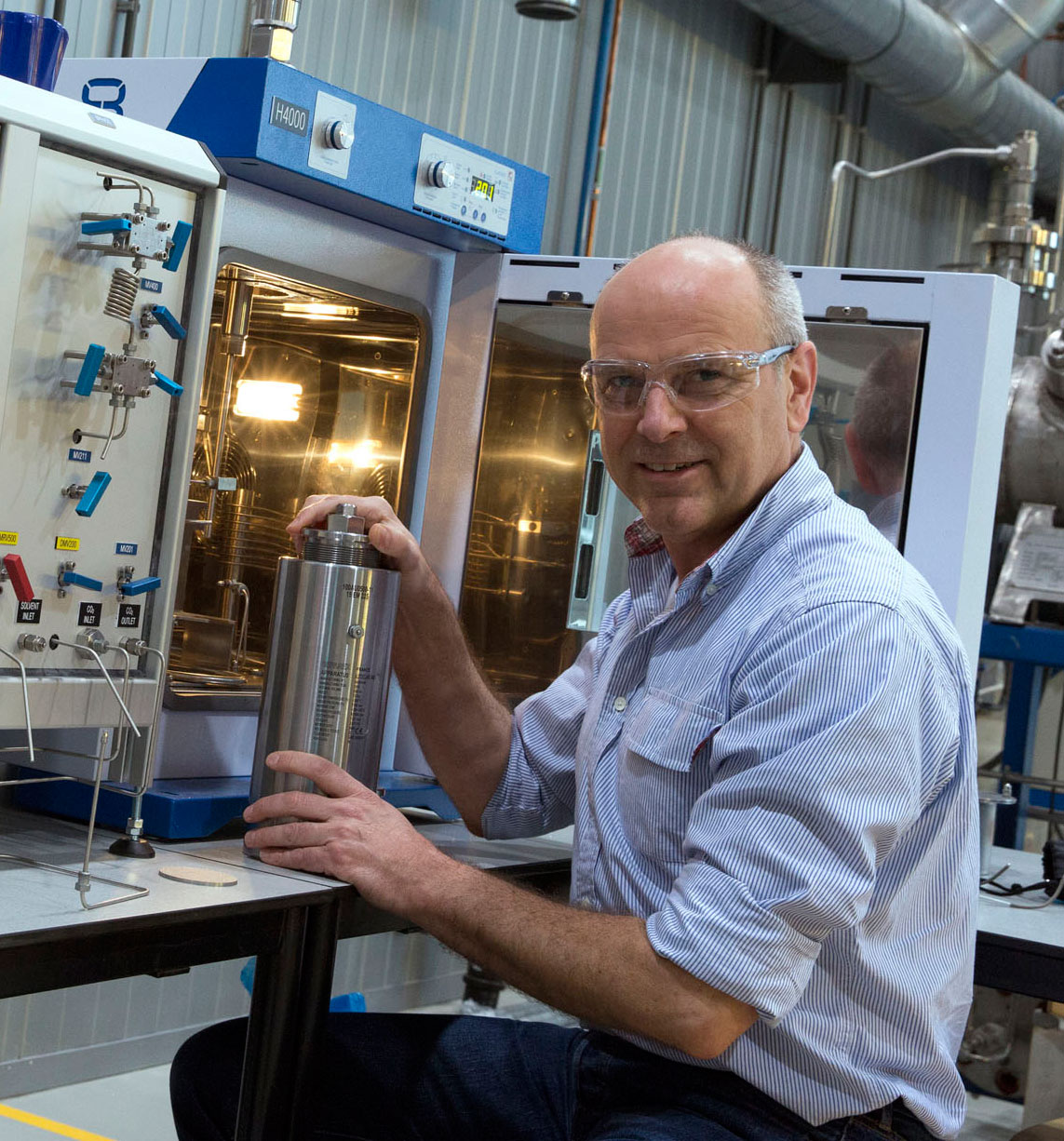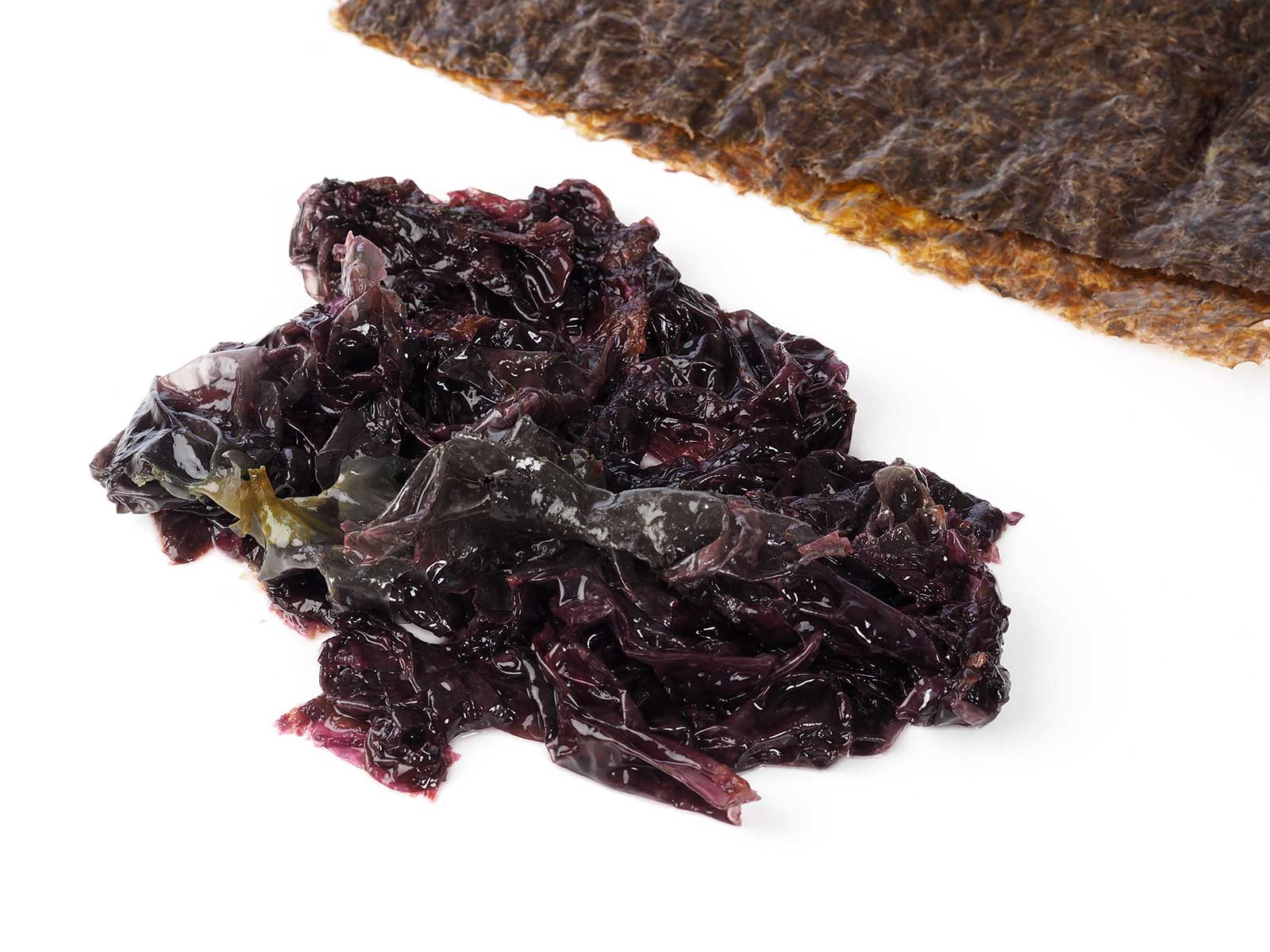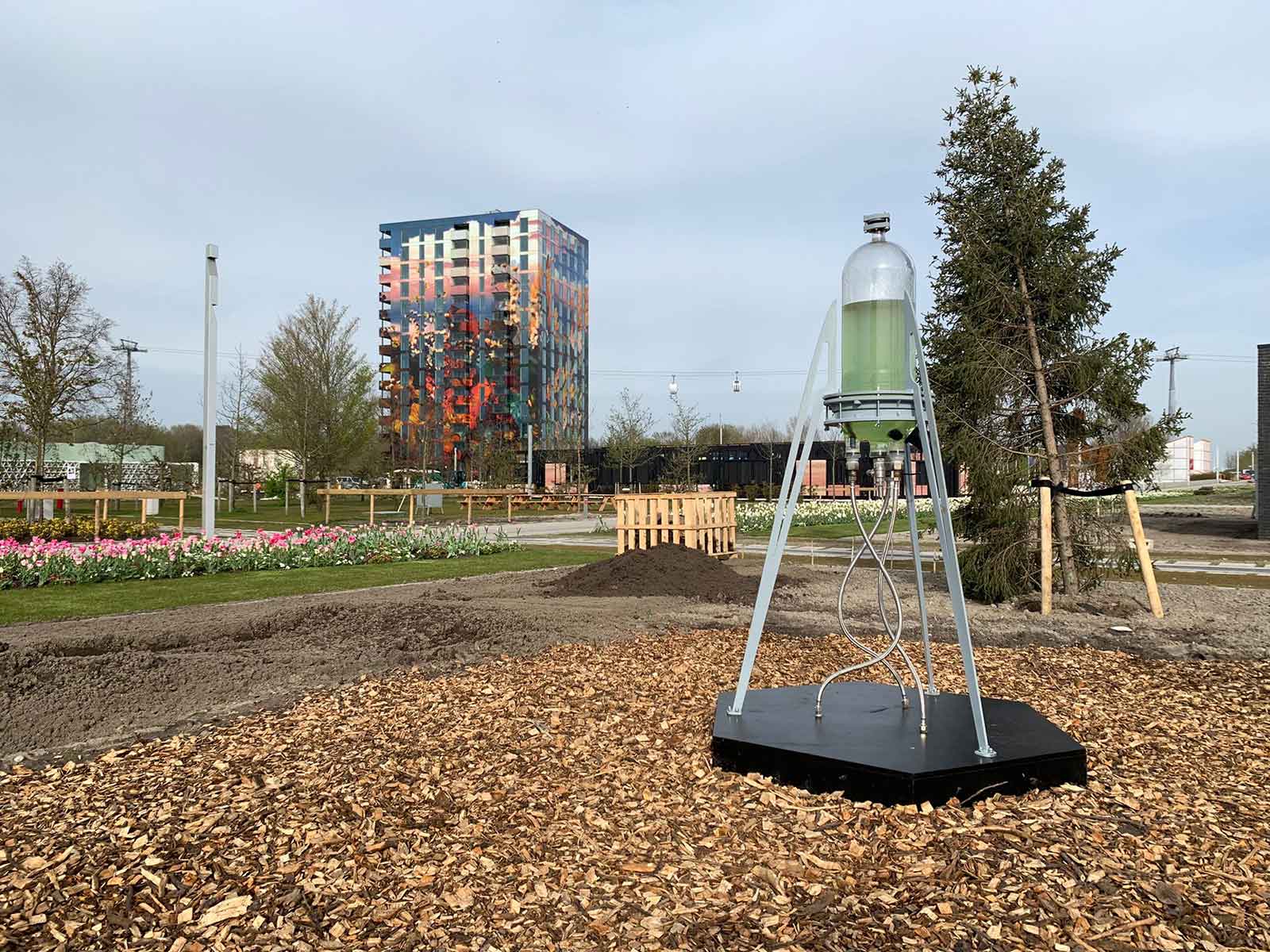Micro and macro algae grow quickly, absorb CO2 and use little or no land. They are therefore an ideal source of biomass. Within the Hanze University of Applied Sciences in Groningen, research has been conducted for years into these gems of the blue bioeconomy. “Microalgae in particular could offer an alternative for some agricultural crops,” says Rob van Haren, professor of Transition Circular Bioeconomy at the Research Centre Biobased Economy of Hanze University. “Ecologically that is quite feasible, but the business case can only be closed if you can get enough high-quality bioactive substances out of them. We are talking about substances with prices of a few thousand euro per kilogram, like the food supplements astaxanthin, fucoxanthin and lutein.
Extraction
Van Haren uses various methods to get to the precious substances: from supercritical CO2 extraction and enzymes to vacuum suctioning or pressurising, possibly in combination with homogenisation and ultrasound. This is used, for example, in an ongoing study of the Tetraselmis, a microalgae that lives in salt water. ” Here we are particularly interested in lutein as the main content component.” Other research is focused on the valorisation of the Ulva (‘sea lettuce’) and the red seaweed Porphyra. In the latter research, recently awarded by Regieorgaan SIA (part of the Netherlands Organisation for Scientific Research NWO), Hanze University is working with the Royal Netherlands Institute for Sea Research (NIOZ). “Here we are looking at mycosporine-like amino acids (MAAs) which can be used as natural UV blockers in cosmetics. These are absolutely ‘reef safe’: they do not cause any damage to the coral reefs.”
In addition, Porphyran is being studied, a polysaccharide in red seaweed that is both gelling (“similar to agar-agar”) and has a prebiotic effect. “We are investigating whether that substance has added value for shrimp farming or keeping human intestinal flora healthy.” The rest of the seaweed is fully biocascaded, meaning that it is pulled apart and processed into other products. The Dutch company Meatless, for example, turns the Porphyra proteins with field beans into a seaweed burger and another company, Seaweed Yarn & Dye, makes textile dye from the pigments and oils.
[INSERT BOX]
Lighthouse
Given the amount of technology involved, it is questionable whether algae cultivation will ever become ‘normal’ in Dutch kitchens. But people should be introduced to it, according to the inventors of The Lighthouse, 4F.Studio (an artists’ collective consisting of Kim van den Belt, Joshua Kelly and Steven Wobbes). The name of the bioreactor refers to the guiding function that the object also fulfils: making the general public aware that it is also possible to use technology without destroying the planet. The design was awarded the first prize of the Light Challenge 2021 competition this month.
The Lighthouse is a bioreactor that contains cyanobacteria and demonstrates the principle that algae can be grown at night by reversing the day/night cycle. In this way, the bioreactor is used as street lighting, while it makes optimal use of ‘residual’ light for the photosynthesis of the algae. ” This allows us to grow biomass such as microbes or microalgae for food, for example, but also for biofuels, supplements or medicines,” says artist Kim van den Belt. “4F.Studio wants to operate at the intersection of art, design and science, and the collaboration with people like Rob van Haren helps us do that.”
“We want people to know that this technology exists, by taking it out of the lab and placing it on the street. The aesthetic and the language we use helps people to better understand the world and the science around it.”
The Lighthouse can be seen at the Floriade World Expo 2022 in Almere until October.
This article was created in cooperation with Hanze University of Applied Sciences Groningen.
https://hanze.nl/
Image above: Nicolas Wijnstekers/4F.Studio






